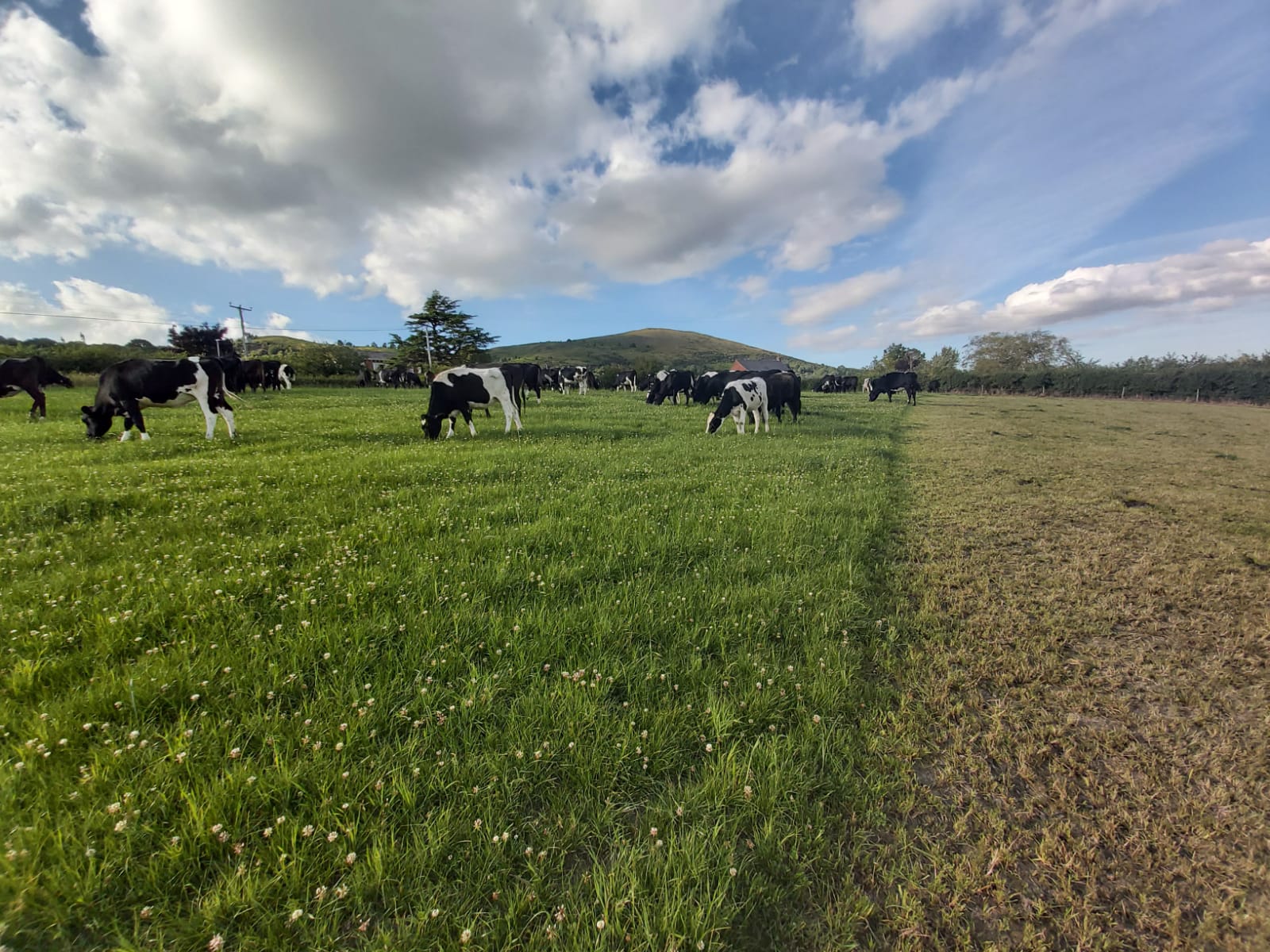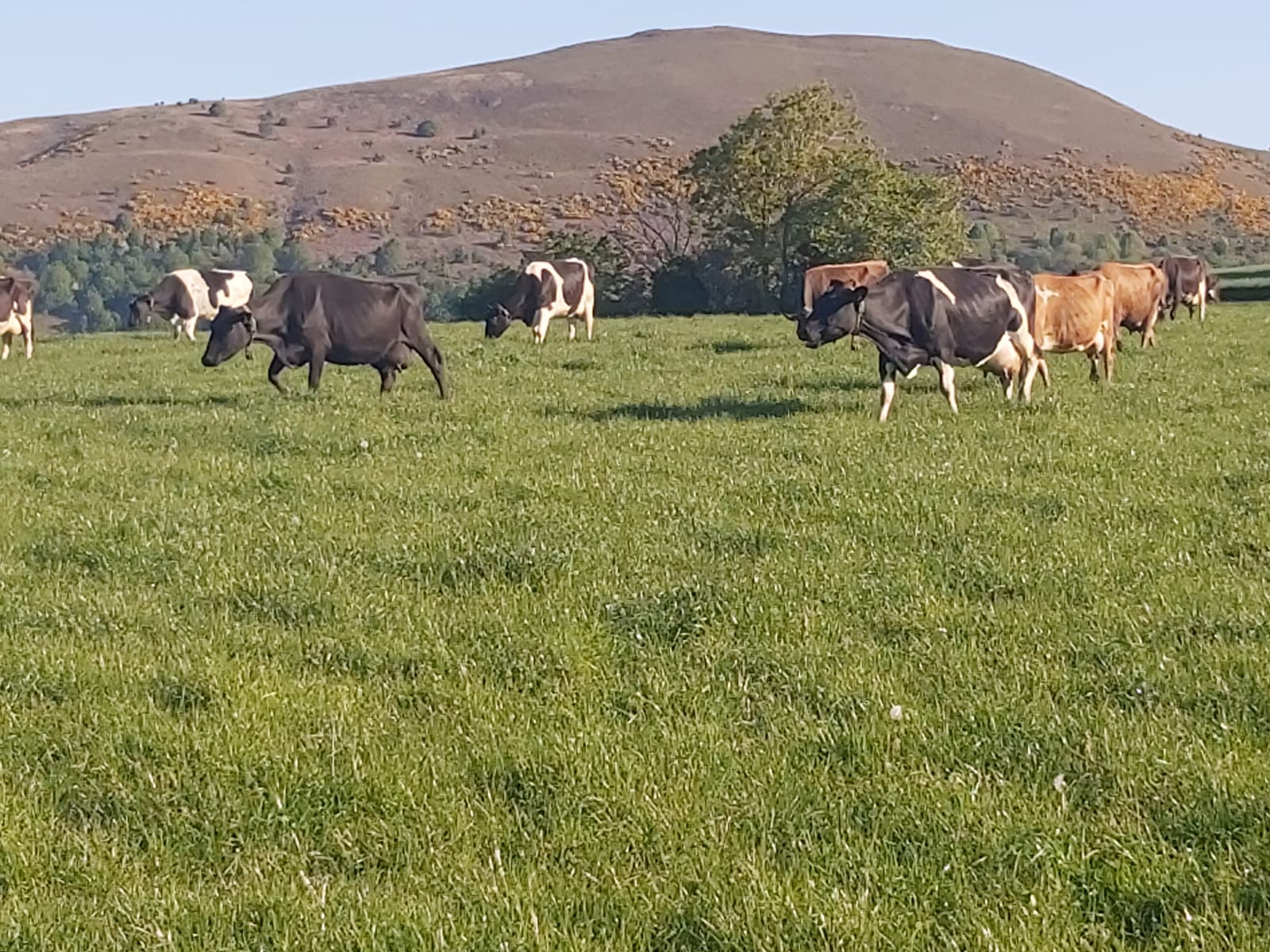- Home
- Knowledge library
- Meet Forage for Knowledge contributor David Lee
Meet Forage for Knowledge contributor David Lee
David Lee joined Forage for Knowledge as a contributor from the start, having been one of the early convertors to rotational paddock grazing 25 years ago.
The business
David and Rachel Lee farm in partnership with their son, James, at Winnington Green Farm on the Welsh Borders running a spring block-calving herd on a low-cost basis.
The farm
Altitude: 150–183 m (450–550 ft) above sea level
Soils: heavy clay loam
Rain: (35”) 875 mm
350 acres (142 ha) owned
180 acres (73 ha) rented, including 85 ha milking platform, 35 acres (14 ha) Triticale for wholecrop and 99-acre (40 ha) former golf course two miles away. This was reseeded and now supplies grazing for calves plus silage.
Stocking rate 4.4 cows/ha.
The cows
425 spring-block calvers, starting 10 February, Kiwi-cross genetics. 5,500 L from 600kg/cow of cake; 180 followers. Turnout mid-February, fully housed by early December.
How long have you been measuring and managing grass?
“I changed system at the age of 40, and it was like a change of career”, says David. “We always measured regularly, though it was more like snapshots which weren’t as useful as weekly measuring because you don’t have all of the information.”
David believes there has been a bit more discipline since his son James returned to the farm. While he used to stay in the same rotation and skip paddocks, James puts cows into the longest grass.
What have you learned?
“If you manage it right, grass quality doesn’t vary through the season; it is 12 ME all through. Since going into paddocks with the longest grass, we have grown more grass. The farm averages 17 t DM/ha, and the paddocks don’t vary hugely, much to people’s surprise. They are of similar quality and management.”
Regular reseeding isn’t needed under good management, he feels, and there are paddocks on the platform that were last renewed 35 years ago, yet still average 17 t DM/ha. “They are grazed at the right time, get a bit of fertiliser after each grazing and lime when necessary. Grass reverts to whatever your management is.”
Long-term benefits?
Before changing system, turnout was the third week of April and cows were housed by 10 October. “It took about four years to go from set stocking to paddock grazing and really get going and be confident. There wasn’t a local support network. You made mistakes and learned”, says David.
He used to make 14 t/cow/year of silage and now only clamps 4 t/cow/year. “We feed 1.25 t/cow/year less concentrate. Have confidence in grass it will do the job – and get the right sort of cow.”
What’s this year’s season been like so far?
Spring started not too bad, but May was very wet with 125 mm of rain compared with just 20 mm in April. “This wasn’t ideal as it coincided with the start of service”, he points out.
“Last year in May, we were feeding silage because it was too dry and there was no grass growth. The key is to be flexible. This year, we fed silage until 26 April and have too much grass at the moment. We are selectively pre-mowing average covers of 2,400–2,500 kg DM/ha. If we pull it out of the rotation, we’ll be tempted to keep it a bit longer before mowing and won’t get the regrowth and soon end up with a deficit.
“The forecast is hot and dry ahead, and we’ve had only 7 mm of rain in June so far. It’s better to nip it off and keep the rotation where it is at 24 days. We are alright for another month as our heavy soil holds the moisture, but we will need rain in July.”



